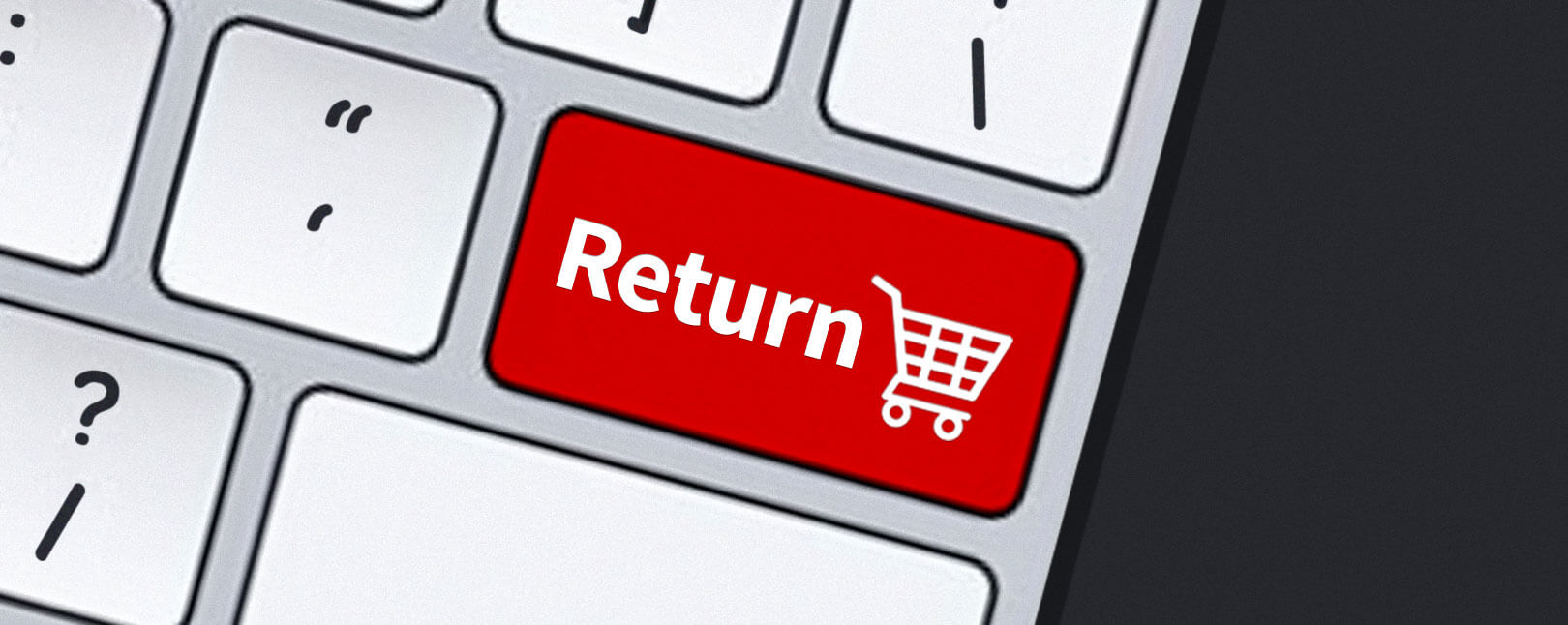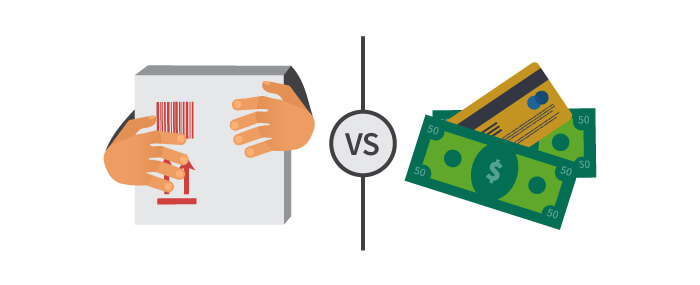Top 7 Reasons a Customer Returns Merchandise & How You Can Prevent It
Why do customers return merchandise? Sometimes the reason for a customer return is obvious…but sometimes not.
There are as many different reasons as there are different customers, but understanding consumer behavior can be the difference between a great entrepreneurial success story and failure.
Why It's Important to Analyze Consumer Behavior
Some would argue that customer returns are a justifiable cost of doing business.
To a certain extent, they're correct; some returns are simply unavoidable. So, why should you worry about the thought process behind consumers’ actions? Why bother even trying to understand the reasons customers return merchandise? Simply put, because many returns can be avoided before the purchase is even made.
By better understanding how consumers behave and why they do certain things, may be able to detect patterns and anticipate future actions. This makes it possible to create detection and prevention strategies that can positively impact your bottom line.
Plus, there is another—even more substantial—matter to consider: chargebacks.
Being more conscientious of consumer behavior can help mitigate the risk of both returns and chargebacks. That’s important, because while returned merchandise is a thorn in any merchant’s side...any customer return is still better than a chargeback.
How Returns Differ from Chargebacks
When consumers return merchandise, the merchant involved:
- Refunds the customer’s money, often including shipping fees;
- Repackages and/or restocks the item, when possible; and
- Occasionally marks down prices to facilitate a resale.
- The merchant loses sales revenue, AND any merchandise already shipped.
- Each chargeback is accompanied by a chargeback fee (usually around $20).
- Extra fines must be paid if the merchant’s chargeback-to-transaction ratio gets too high.
- Runaway chargebacks could force the merchant to use a high-risk processor, meaning more restrictions and higher fees.
- High chargeback-to-transaction ratios threaten the business’s credit card processing abilities, jeopardizing the entire business.
Do your policies encourage chargebacks? Find out now.

Returned merchandise is an opportunity to recoup revenue and keep costs in check, but with a chargeback, you may ultimately pay more than the original cost of the merchandise!
To make matters even worse, more and more chargebacks are the result of intentional friendly fraud these days. Thus, your best bet is always going to be prevention whenever possible.
Understanding why customer returns happen allows you to create policies that keep return ratios in check and reduce the risk of friendly fraud chargebacks. Here are some of the most common reasons for returns…and what you can do about them:
Purchasing the wrong item is especially pervasive in eCommerce because the consumer can’t physically handle the product. For example, the shopper might buy a pair of shoes and later realized they are the wrong size. You would assume there's nothing you can do to control that…but hold on.
Because there is no physical contact prior to purchase, online shoppers rely even more heavily on accurate and detailed product descriptions. Therefore, all product and service descriptions need to be as precise and definitive as possible.
You need to give customers as much information as possible to fully understand the purchase, while also attempting to answer any potential questions in advance. Video clips, as well as clear high-resolution photos from multiple angles, are both extremely beneficial.
Sometimes consumers discover they don't need certain merchandise shortly after a purchase. Phone cases, chargers, and other accessories commonly fall into this category, as technology updates or broken devices may cancel out the need for the purchased item. Cardholders' circumstances—moving, downsizing, getting married, changing jobs—might also cause them to return merchandise.
It’s a challenge to anticipate or prevent customer returns for items that are no longer needed, but you may be able to turn it around.
First, try highlighting distinguishing features of the item in the product description. This may convince buyers to keep the product. Alternately, try offering customers an exchange discount; for example, provide a 10-20% added purchase credit if the customer exchanges the item for something else instead of returning it for cash.
Products that don’t measure up to consumers’ expectations are typically returned. This is like the customer buying the wrong item, but in this instance, you can’t really blame the customer.
You must take care to avoid overselling or overstating a product’s capabilities and functions. Marketing techniques can be used to highlight a product or service, but at the end of the day, must realistically reflect that item’s qualities. Remember: make your merchandise look good…but not too good.
With gifts, the buyer may not be familiar with the product or service being purchased, or with the need, taste, or wishes of the recipient. This can easily lead to customer returns, and can be difficult to prevent.
One suggestion might be to offer alternate or complementary product ideas to help educate inexperienced shoppers. Curated gift guides are a popular idea, especially around the holidays, as they allow shoppers to select relevant items based on recipients’ interests. Of course, gift cards can make the process easy on everyone as well.
Finally, a clearly-stated, hassle-free return policy might make cardholders more comfortable making a purchase…and encourage the recipient to return gifts rather than file a chargeback.
Customers will be understandably upset if an item they paid for is damaged or defective upon arrival and will almost certainly return the item. With a little extra care, though, you can decrease the chances of the return being bypassed for a chargeback:
- Have a system in place to doublecheck the quality of any item being shipped.
- Carefully package all merchandise.
- Partner only with reputable shipping companies.
- Using shipping insurance to help keep losses to a minimum.
Of course, accidents can still happen even with these mechanisms in place. That’s why you need to promote a "satisfaction guarantee" to let customers know upfront that you'll work with them to resolve any issues.
Consumers have every right to be frustrated in this situation, but unlike a damaged item, the blame can't be shifted to a careless handler. An error was committed in-house during the order fulfilment process.
This is a scenario you want to avoid at all costs, as it is one of the most blatant merchant errors that could trigger a chargeback.
All fulfilment shipments should be doublechecked against packing slips or invoices prior to release. Mistakes will still happen, of course, but there’s no reason to give up easy errors. Plus, as in other items from this list, promoting customer return policies online can help users know what to expect. This can reassure agitated buyers and make them more likely to request a return than to file a chargeback.


The State of Chargebacks 2018
Launched as a way of collecting and analyzing industry findings, the State of Chargebacks survey reflects the experiences of more than one thousand respondents in the card-not-present space. Download to learn the latest insights on fraud and chargeback management.
Free DownloadWardrobing occurs when a consumer buys an item, uses it, then attempts to return the item for a full refund. It might involve, say, a job hunter who buys a suit for an interview, then returns it to save money. Despite its name, the scheme is not limited to clothing: For instance, a football fan might buy a big TV and then return it the day after the Super Bowl.
It’s obviously unethical when customers return merchandise as part of a wardrobing scheme. However, it is a very common form of return fraud.
It is nearly impossible to completely eradicate wardrobing, as tightening security on all returns will frustrate legitimate customers, not just fraudsters. An explicitly detailed policy that outlines acceptable returns, however, can help you dispute any wardrobing attempts that devolve into chargebacks. You should also keep detailed communication records, as it can be used as compelling evidence later.
Encouraging Returns Instead of Chargebacks
It should be obvious by now that a well-written return policy can save you time and money, while also minimizing hassles for customers. When combined with business best-practices and excellent customer service, your return policy has the potential to increase customer satisfaction by ensuring buyers get the right order…right from the start.
This handy infographic from Housecall Pro further drives home the importance of a strong and dyanmic return policy, and how to create one:
A good customer return policy can also be instrumental in encouraging customers who ARE unhappy to contact the merchant for a refund instead of filing a chargeback. Even with no intention to commit fraud, there are multiple reasons a cardholder might automatically opt for a chargeback, many of which are completely within your power to change:
- Your contact information isn’t easily accessible.
- Customer’s queries go unanswered.
- Customer service hours are too restrictive.
- Automated answering systems that minimize human-to-human interactions are off-putting.
- Cancellation and return policies are too restrictive.




